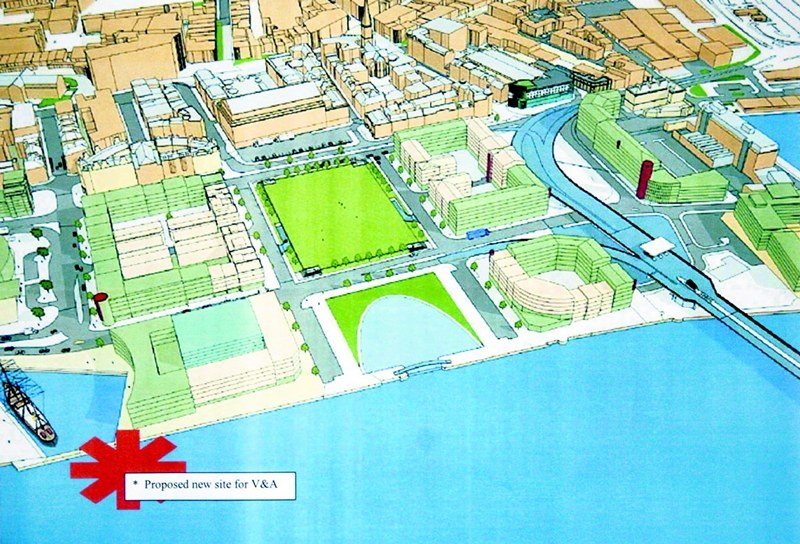As The Courier continues its series of Energising Scotland articles looking at the prospects of a renewable energy jobs boom, another area where Dundee could be about to undergo a revolution is with plans to bring an outpost of the Victoria and Albert Museum to the waterfront. Maura Bowman explores the theme of reinvention.
Picture a city built on a river a city whose wealth was built on shipbuilding and heavy industries, but which has fallen on hard times with their decline. Unemployment is high and the perception of outsiders is not flattering. They don’t see a vibrant city bristling with potential just an area of grey, depressing urban decay.
Now look ahead less than 20 years. A major water improvement project has cleaned up the river, and the city, which boasts two universities, has reinvented itself as a high-tech hotspot. A new technology park has been built and the old dockland area is being redeveloped, winning architectural plaudits.
More importantly, the city has had the vision to kickstart its economy by reinventing itself as a cultural hub. In doing so, it has attracted some of the world’s leading architects and much of the regeneration has focused on a major project the building of an iconic waterside museum that draws around a million visitors every year, 80% drawn from outside the local area.
And the city has scored something of a coup by becoming one of the few locations on earth to boast a building designed by internationally-renowned architect Frank Gehry.
With Gehry’s Maggie’s Centre sitting in the grounds of Ninewells Hospital and plans to bring an outpost of the Victoria and Albert Museum to Dundee, you could be forgiven for thinking this is an optimistic glimpse of the city on the Tay a few years down the line.
You would be wrong, though.
Welcome to Bilbao, Spain’s fourth largest city and home of the Gehry-designed Guggenheim Museum.
From a standing start, Bilbao has become a must-see for cultural tourists.
Tourism was virtually non-existent in the city before the Guggenheim opened in 1997. By the museum’s 10th anniversary it made up five percent of the local economy.
Over the same period, the number of visitors leapt from 169,000 each year to 623,000. No surprise, then, that eight new hotels had to open to cope with the demand.
Last year alone, the Guggenheim is credited with attracting around 205 million to the region and supporting more than 3600 jobs.
And what Bilbao has done, Dundee can do, albeit on a smaller scale.
Indeed, according to Juan Alayo, director of urban regeneration company Bilbao Ria 2000, the city on the Tay has even more going for it.
“With institutions such as Dundee Contemporary Arts well established, there’s already a strong precedent,” he is on record as saying. “It will be easier to make a successful enterprise, because it builds on an enormous education and design background.”
He has backed Dundee’s desire for a building that “makes a statement of people’s ambition and confidence.”
She goes on: “in the end, we are talking about highly costly public investments that must generate either a clear social or economic return on investment. The Guggenheim Museum Bilbao was a very risky project, but it is on the right track to being worth the huge risk and investment.”
In a recent visit to Dundee, she also pointed out that Dundee has something that Bilbao doesn’t a naturally beautiful setting.
One further point to remember: in Bilbao, they had to fight every step of the way to push the Guggenheim plans through, with many considering it madness to throw money at a museum when times were hard.
While the people of Dundee may have been initially sceptical about the likelihood of the V&A plans coming to fruition, their doubts have largely been overcome and the project now prompts a new air of excitement and optimism.
If goodwill and enthusiasm can win the day, Dundee is already streets ahead.
